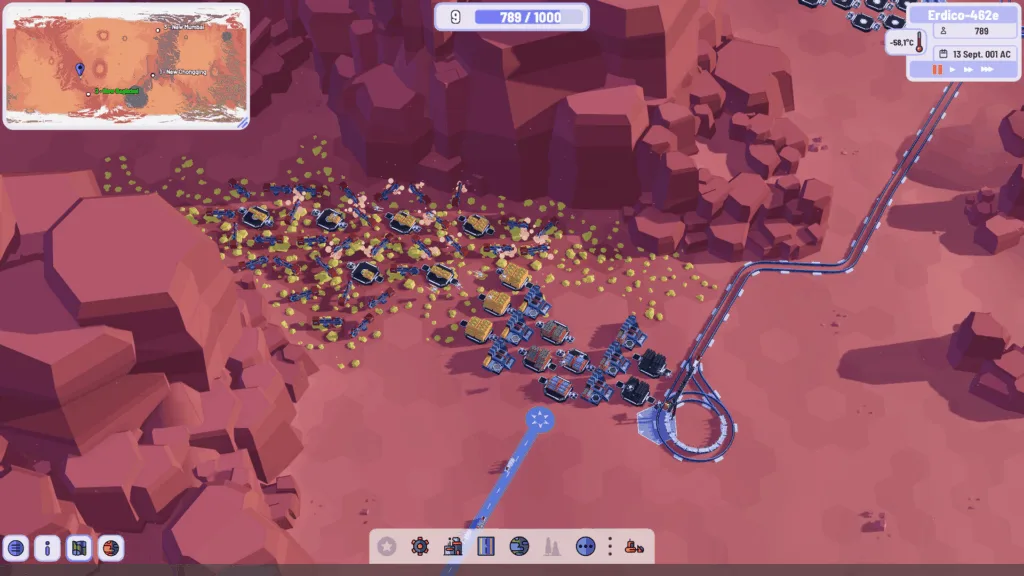Introduction
Plan B: Terraform asks a bold question: what if the next great factory-builder wasn’t a race against aliens or fire-breathing logistics puzzles—but a patient, planet-sized eco-puzzle where the only enemy is inertia?
Developed by Gaddy Games, Plan B offers a chill, contemplative twist on the automation genre. There’s no combat, no pollution to panic over, no conveyor-belt spaghetti to untangle. Instead, you’re dropped on a barren rock and tasked with nothing less than transforming it into a livable ecosystem for humanity.
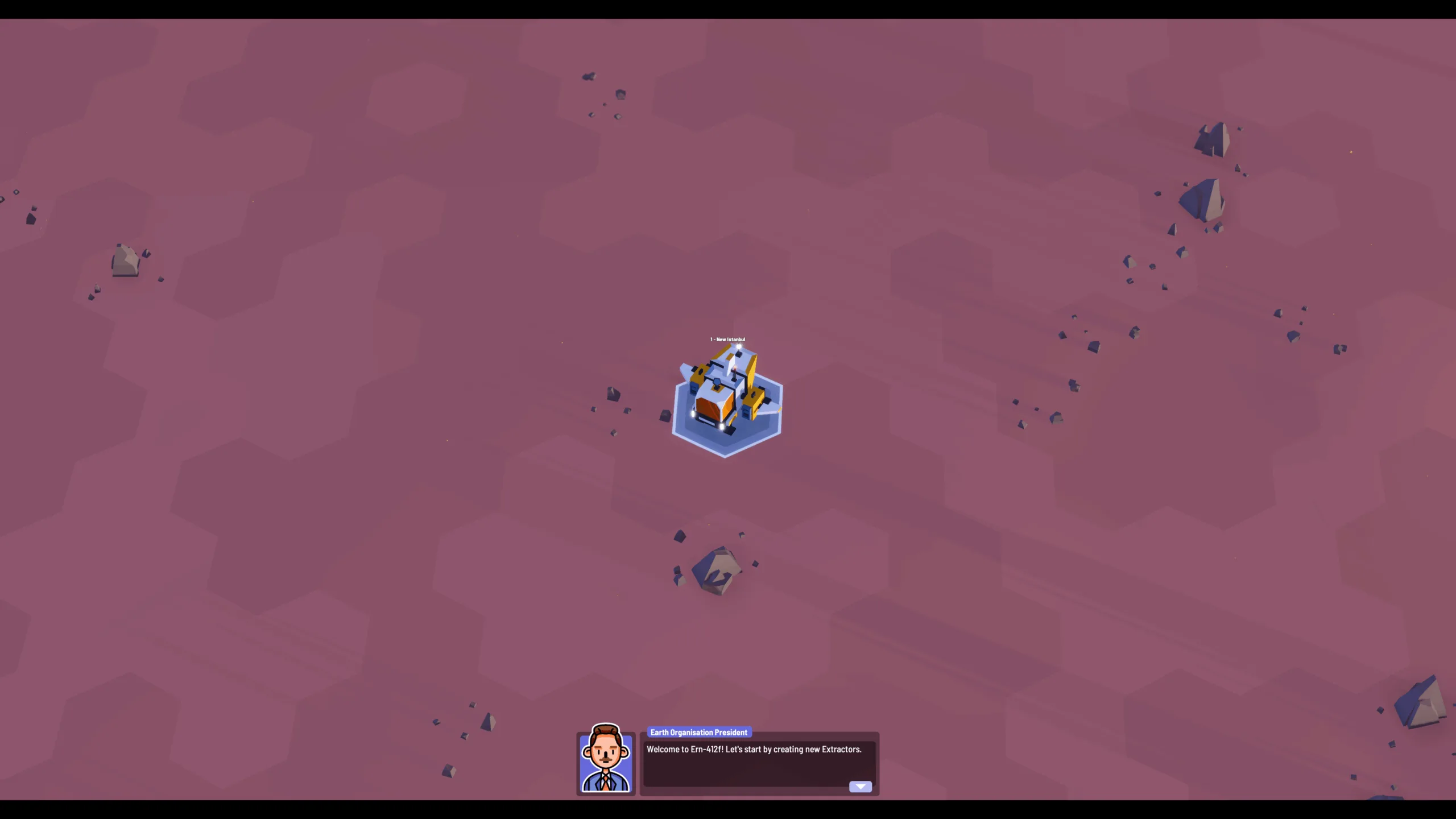
It sounds poetic. Sometimes, it is. Other times, it’s a painfully slow dance of clicking depots, dragging drone paths, and waiting for bars to fill. In the end, it’s a game that finds its niche—but can’t quite sustain its scale.
Gameplay: Space Communism, Hold the Stress
At its best, Plan B: Terraform is a sandbox for logistics nerds and terraforming dreamers. You start small—digging up basic ores, assembling factories, and expanding through tiers of resource refinement. Eventually, your sprawling supply chains unlock the tools to alter the planet’s climate: greenhouse gas generators, water pumps, and tree planting drones. You can watch the planet shift from a lifeless orange desert to a green-blooming biosphere. That’s a genuinely satisfying arc.
But the moment-to-moment mechanics? That’s where things get dicey.
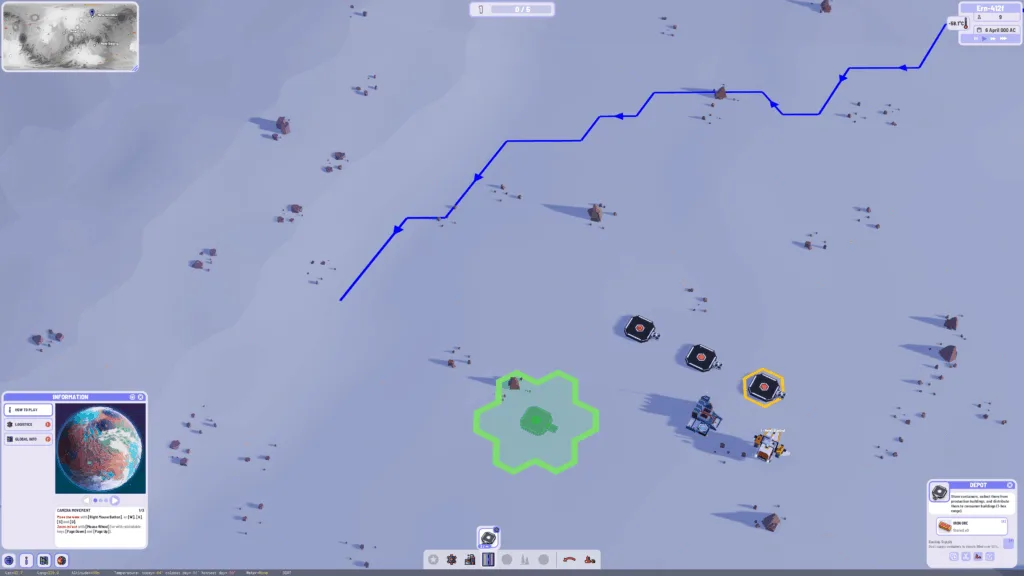
Depots are the backbone of logistics—and also the bottleneck. These multi-role structures handle resource collection, storage, and distribution via drones. In theory, it simplifies logistics. In practice, it limits control. You can’t fine-tune priority, limit throughput, or build complex routing. It’s plug-and-play logistics, which makes early progression smooth… and late-game builds feel sluggish and imprecise.
Beyond depots, transport (trucks, trains, and ships) is weirdly frictionless. Vehicles don’t collide. Traffic jams don’t exist. You can stack 50 trains on a single track, and they’ll ghost through each other like spectral cargo. While this removes micromanagement headaches, it also strips away the kind of problem-solving that makes games like Factorio or Dyson Sphere Program so rewarding.
Eventually, you’ll scale up to planetary logistics—shuttling goods from deserts to poles, managing multiple cities, and responding to climate effects like shifting biomes and melting glaciers. But by then, the cracks start showing.
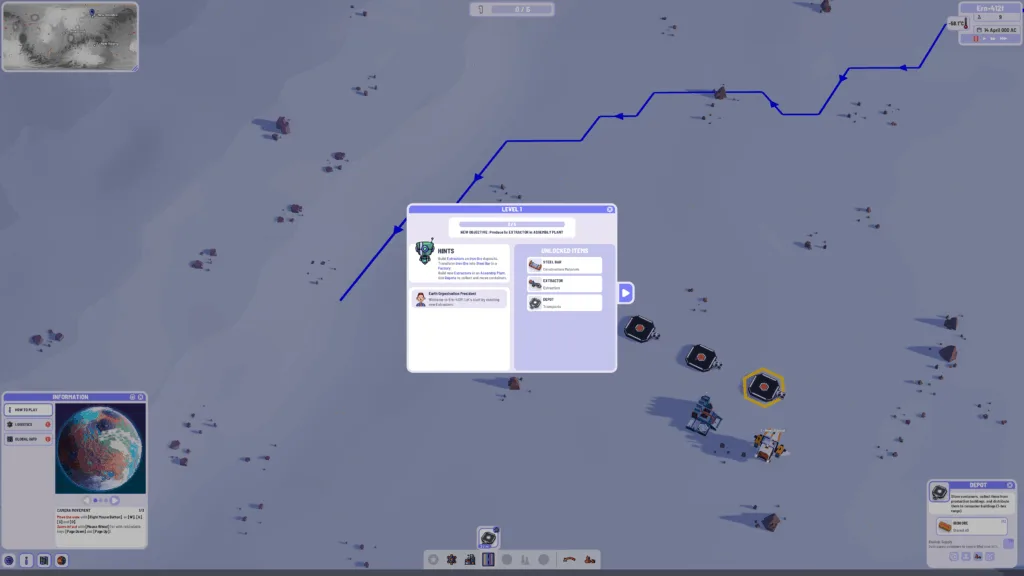
Terraforming: Pretty, But Mostly Passive
Despite the name, terraforming isn’t the real gameplay—it’s the result. You warm the planet with greenhouse gases, melt ice, and pump water into rivers. Then you plant trees, each type thriving in different climates. Over time, vegetation spreads on its own, responding to temperature and moisture levels.
It’s genuinely beautiful to watch.
But you don’t do much with it. Terraforming is more like watching a spreadsheet animate. And while there’s a surprising level of simulation beneath the surface—such as groundwater flow and climate zones—it mostly plays out without input once conditions are met.
Audio & Visuals: A Gentle Aesthetic
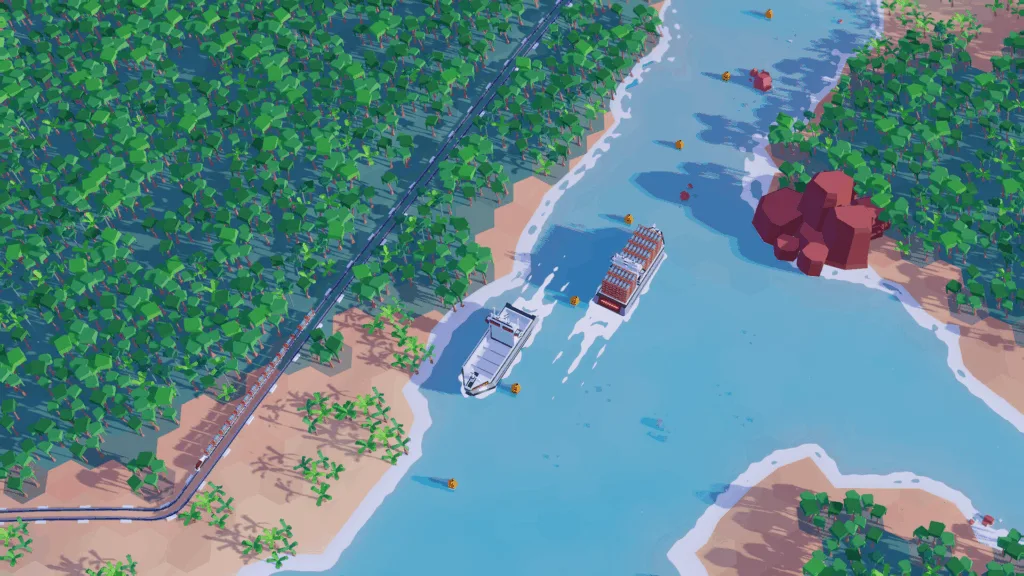
Graphically, Plan B: Terraform is clean and charming. Hex-based terrain makes infrastructure placement simple, and zooming from a single factory to the full planet is buttery smooth. Watching your web of transport lines grow and cities bloom feels satisfying and earned.
The soundtrack leans into soft electronic tones—pleasant, meditative, and rarely intrusive. It’s music designed to stay out of your way while you optimize logistics and admire your green empire. Effects are minimal but functional, with the whir of drones and hum of factories providing light ambiance.
Pros
- Relaxing, No-Stress Gameplay: A rare logistics game that’s non-combative and peaceful, with zero penalty for inefficiency or experimentation.
- Planetary Scale Done Right: Zoom seamlessly between local and global views; a visual treat that complements the terraforming theme.
- Visually Rewarding Progression: Watching your barren world bloom into forests, rivers, and cities feels like a real accomplishment.
- Low Barrier to Entry: Simple mechanics make it easy to learn, especially for newcomers to factory-building games.
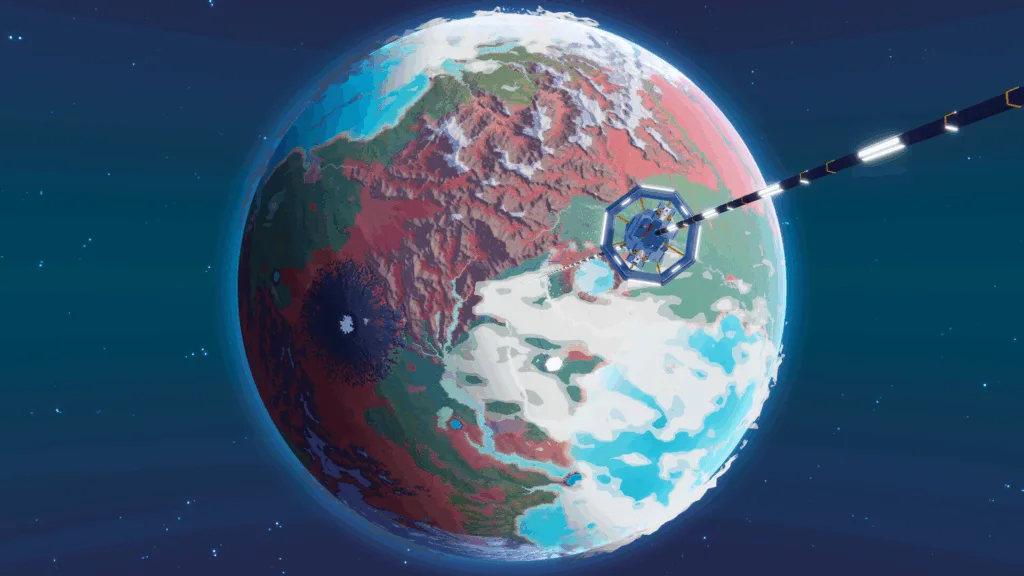
Cons
- Oversimplified Logistics Systems: Depots lack granularity; transport systems remove friction but also remove depth.
- Mid-to-Late Game Grind: Population goals spike dramatically, stretching the late game into a repetitive slog of scaling up supply lines.
- Minimal Interactivity in Terraforming: Climate transformation is mostly passive after the initial setup; not much strategy is involved.
- Performance Issues: Water simulation and large builds can tank framerate and stutter gameplay in mid-to-late stages.
- No Real Replayability: Once you’ve terraformed a planet or two, there’s little incentive to start over.
Verdict: A Gentle Giant With Wobbly Feet
Plan B: Terraform is the kind of game that whispers instead of shouts. It’s easy to admire its vision—an automation sim without violence, a strategy game where you rebuild life instead of stripping it bare. It creates moments of serene satisfaction, especially as your terraformed world comes to life.
But the gameplay loop doesn’t quite hold up over time. Logistics feel too abstract. Progress slows to a crawl. And once the awe of global transformation fades, you’re left optimizing clunky depot networks and waiting for cities to grow.
For players looking for a meditative logistics game with an ecological twist, it’s absolutely worth a shot—especially at its modest price. Just be warned: while the planet gets greener, the gameplay doesn’t always stay fresh.
